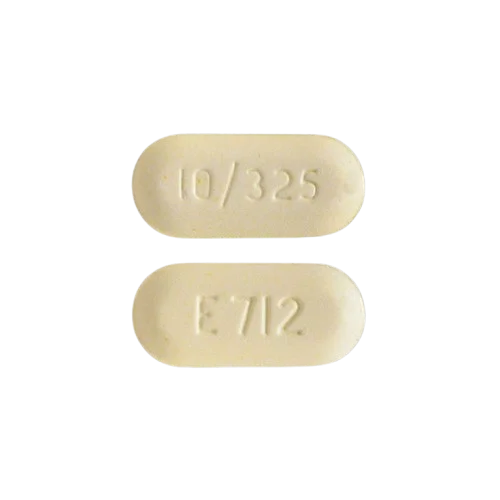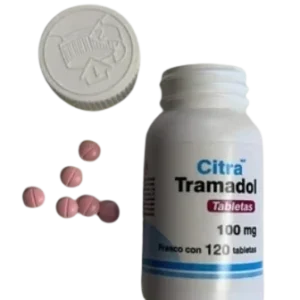Percocet 10/325mg: Uses, Dosage, Side Effects, and Precautions
Percocet 10/325mg is a widely prescribed medication used to manage moderate to severe pain. It combines oxycodone (an opioid pain reliever) and acetaminophen (a non-opioid pain reliever). This combination helps provide effective pain relief for individuals who need stronger medications than what over-the-counter pain relievers offer. Percocet 10/325mg is a higher-strength dosage typically prescribed for those with significant pain. In this article, we’ll explore the uses, dosage, side effects, and important precautions of Percocet 10/325mg.
What is Percocet 10/325mg?
Percocet 10/325mg contains 10mg of oxycodone and 325mg of acetaminophen. This combination works together to reduce pain. Oxycodone is an opioid, which helps reduce pain by acting on the brain and spinal cord, changing the way the body perceives pain. Acetaminophen, meanwhile, works by blocking the production of certain chemicals in the brain that cause pain and inflammation.
Percocet 10/325mg is often prescribed to treat moderate to severe pain, particularly after surgery, injury, or for those with chronic pain conditions that require more intense pain management.
How Does Percocet 10/325mg Work?
Oxycodone, the opioid component in Percocet, binds to specific receptors in the brain and spinal cord known as opioid receptors. When oxycodone attaches to these receptors, it decreases the perception of pain. Additionally, oxycodone triggers the release of dopamine, a neurotransmitter that creates feelings of pleasure or satisfaction, which can contribute to the risk of misuse.
Acetaminophen, the other component, works primarily in the brain to reduce pain and lower fever by inhibiting the production of pain-causing chemicals (prostaglandins).
Together, these two ingredients work synergistically to relieve moderate to severe pain while also reducing inflammation and offering a calming effect.
Common Uses of Percocet 10/325mg
Percocet 10/325mg is prescribed for several conditions, especially when pain is intense and requires prescription-level treatment. The primary uses include:
-
Post-Surgical Pain: After surgeries, such as tooth extractions, joint replacements, or more invasive procedures, Percocet is often used to manage pain during recovery.
-
Injury-Related Pain: Percocet can be prescribed to individuals recovering from traumatic injuries like fractures, sprains, or serious accidents. It helps reduce pain and allows individuals to engage in daily activities without being hindered by discomfort.
-
Chronic Pain: While it is not recommended for long-term use, Percocet 10/325mg may be prescribed for severe chronic pain caused by conditions like arthritis, fibromyalgia, or back pain.
-
Cancer Pain: Cancer patients often experience severe pain, and opioids like Percocet can provide the relief they need to manage symptoms and improve quality of life.
Dosage of Percocet 10/325mg
The dosage of Percocet 10/325mg should be determined by your healthcare provider based on your pain level, medical history, and any other treatments you are receiving. Typically, the dosage for adults is:
- 1 tablet every 4 to 6 hours as needed for pain relief.
Your doctor may adjust your dose based on your response to the medication. It’s important to never take more than 12 tablets in a 24-hour period, as this exceeds the safe daily dose of acetaminophen and oxycodone.
Since Percocet 10/325mg contains both oxycodone and acetaminophen, it is essential to monitor the total amount of acetaminophen consumed daily, as taking too much can lead to liver damage.
Side Effects of Percocet 10/325mg
Like all medications, Percocet 10/325mg can cause side effects. While many side effects are common and may go away with continued use, others can be more severe and require medical attention. The most common side effects include:
- Drowsiness: Percocet is known for its sedative effects, which may cause sleepiness and tiredness. It is essential to avoid activities that require focus, such as driving, while using this medication.
- Dizziness: Some people may feel lightheaded or dizzy, especially when standing up quickly.
- Constipation: Opioid medications like oxycodone are well-known for causing constipation. It may be helpful to increase fiber intake or use a stool softener while taking Percocet.
- Nausea and Vomiting: Some people may experience nausea or vomiting, especially when they first start taking Percocet.
- Headache: Some individuals experience headaches as a result of taking the medication.
- Dry Mouth: This is a common side effect, which can cause discomfort.
In addition to these common side effects, there are more serious side effects that can occur, including:
- Respiratory Depression: Percocet can slow breathing, especially when taken in high doses or combined with other sedatives, such as alcohol or benzodiazepines. This is a potentially life-threatening side effect and requires immediate medical attention.
- Addiction or Dependence: Long-term use of opioids like oxycodone can lead to physical dependence or addiction. Tolerance may also develop, meaning higher doses are needed to achieve the same pain relief.
- Overdose: Taking too much Percocet can result in an overdose, which may lead to severe drowsiness, slow breathing, loss of consciousness, and even death.
- Allergic Reactions: Severe allergic reactions are rare but can include rash, swelling of the face, lips, or throat, and difficulty breathing.
If you experience any of these serious side effects, seek medical help immediately.
Precautions and Warnings
Before using Percocet 10/325mg, there are several important precautions:
- Allergic Reactions: Do not take Percocet if you have a known allergy to oxycodone, acetaminophen, or any other ingredients in the medication.
- Liver or Kidney Disease: If you have liver or kidney problems, you may need a lower dose or more frequent monitoring while on Percocet.
- Pregnancy and Breastfeeding: Percocet can cause harm to an unborn baby and should only be used during pregnancy if necessary. It passes into breast milk, so breastfeeding while taking Percocet is not recommended.
- Substance Abuse History: Since oxycodone is an opioid, it carries a risk of addiction. If you have a history of substance abuse, make sure your healthcare provider is aware of it, and follow their instructions carefully.
- Drug Interactions: Percocet can interact with other medications, including other opioids, benzodiazepines, antidepressants, and muscle relaxants. These interactions can increase the risk of serious side effects, such as respiratory depression or overdose. Always inform your doctor about all medications you are taking.
How to Take Percocet 10/325mg
Percocet 10/325mg should be taken exactly as prescribed. Do not take more than one tablet at a time or exceed the recommended dosage. It is important to swallow the tablet whole—do not crush or chew it. Crushing or chewing can release the medication too quickly, increasing the risk of side effects or overdose.
If you miss a dose, take it as soon as you remember, unless it is almost time for your next dose. Never take two doses at once to make up for a missed dose.
Withdrawal and Dependence
Long-term use of Percocet 10/325mg can lead to dependence. If you have been taking Percocet for a long period and need to stop, your doctor will gradually reduce your dosage to avoid withdrawal symptoms. Withdrawal symptoms may include nausea, sweating, muscle pain, anxiety, and trouble sleeping.
Conclusion
Percocet 10/325mg is an effective medication for managing moderate to severe pain. It combines the power of oxycodone and acetaminophen to provide pain relief, but it also comes with significant risks, including dependence, overdose, and liver damage. Always follow your doctor’s instructions and take the medication as prescribed to avoid these risks. If you experience any serious side effects, contact your healthcare provider immediately. When used responsibly, Percocet 10/325mg can significantly improve quality of life for individuals suffering from severe pain.








